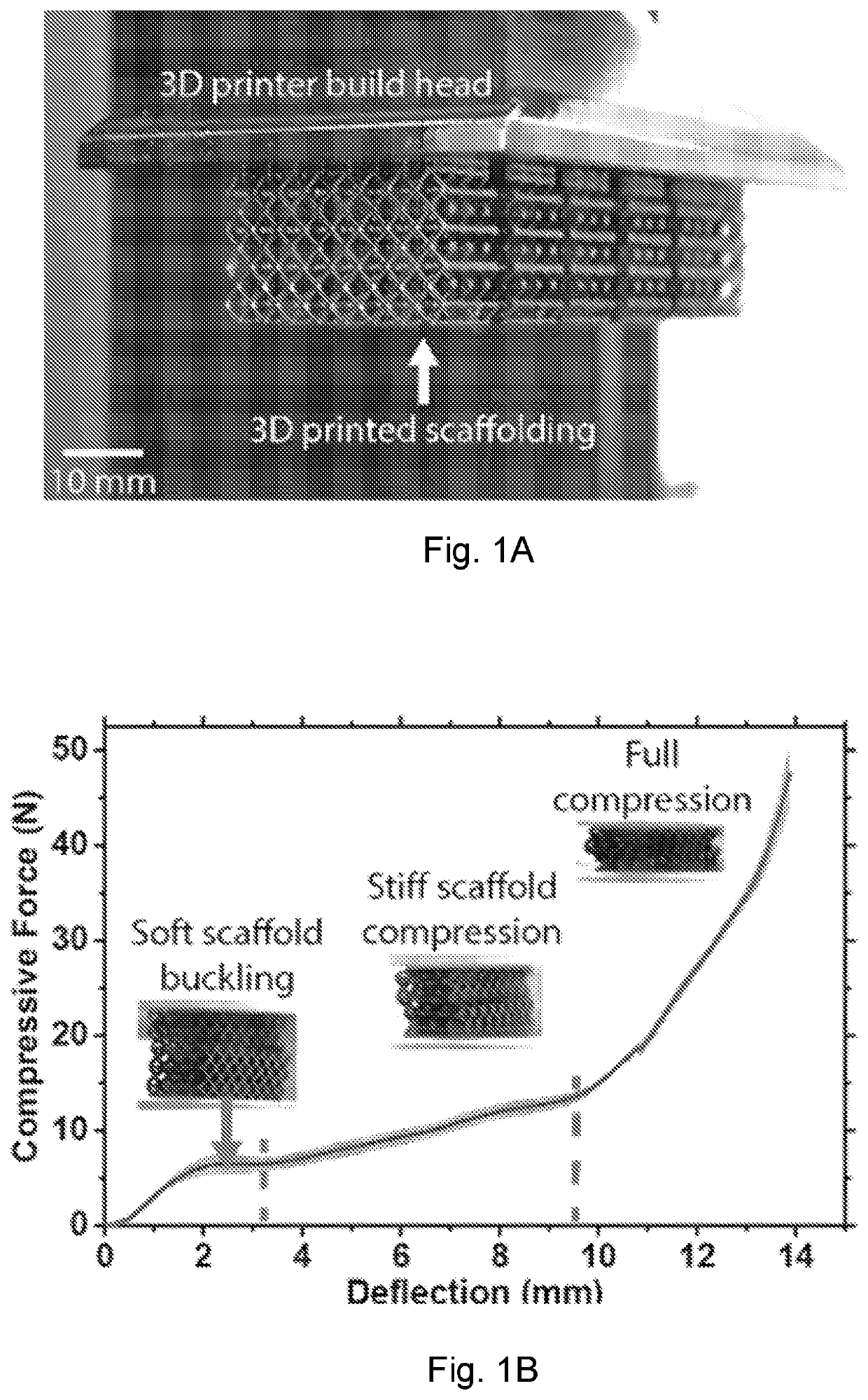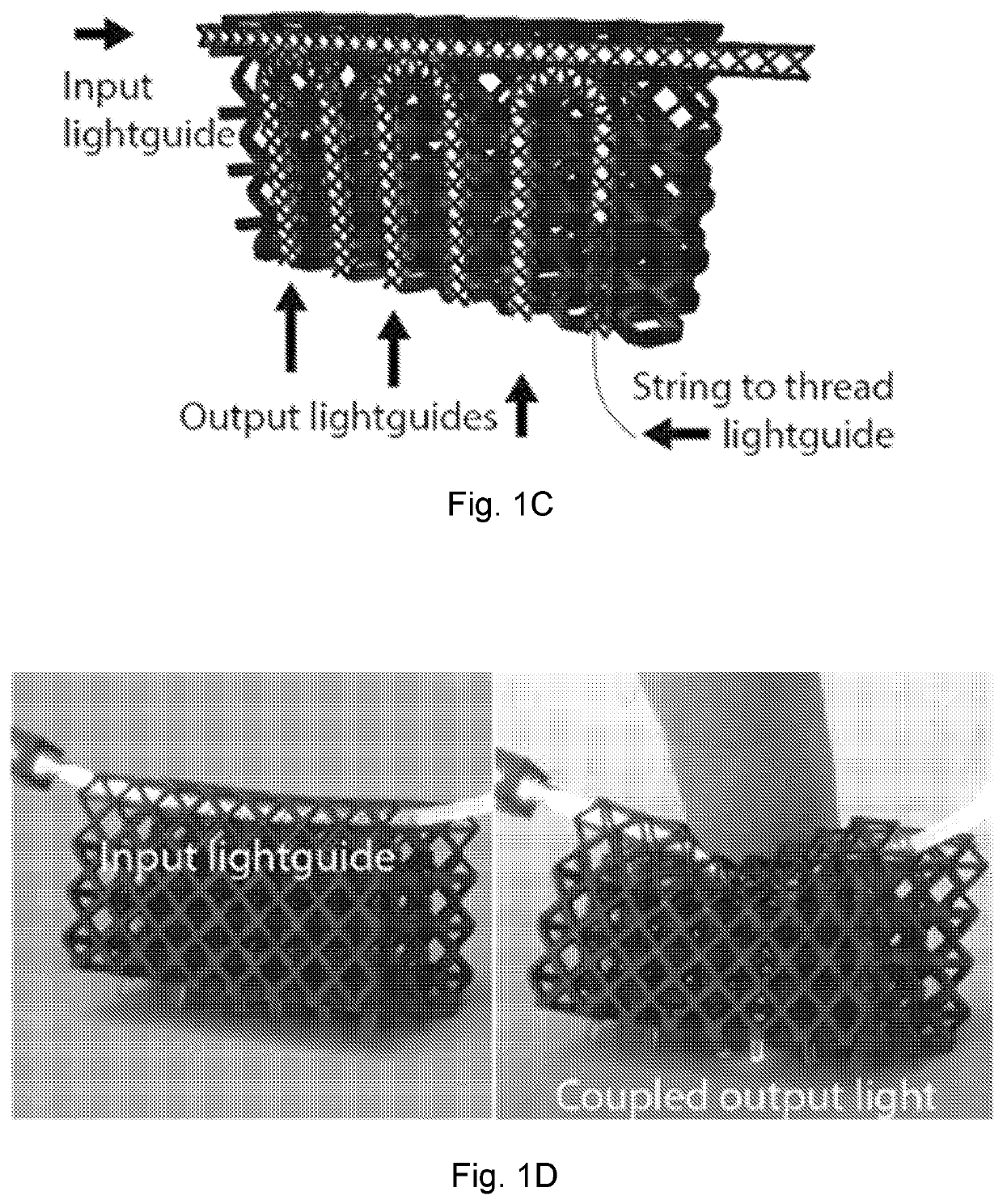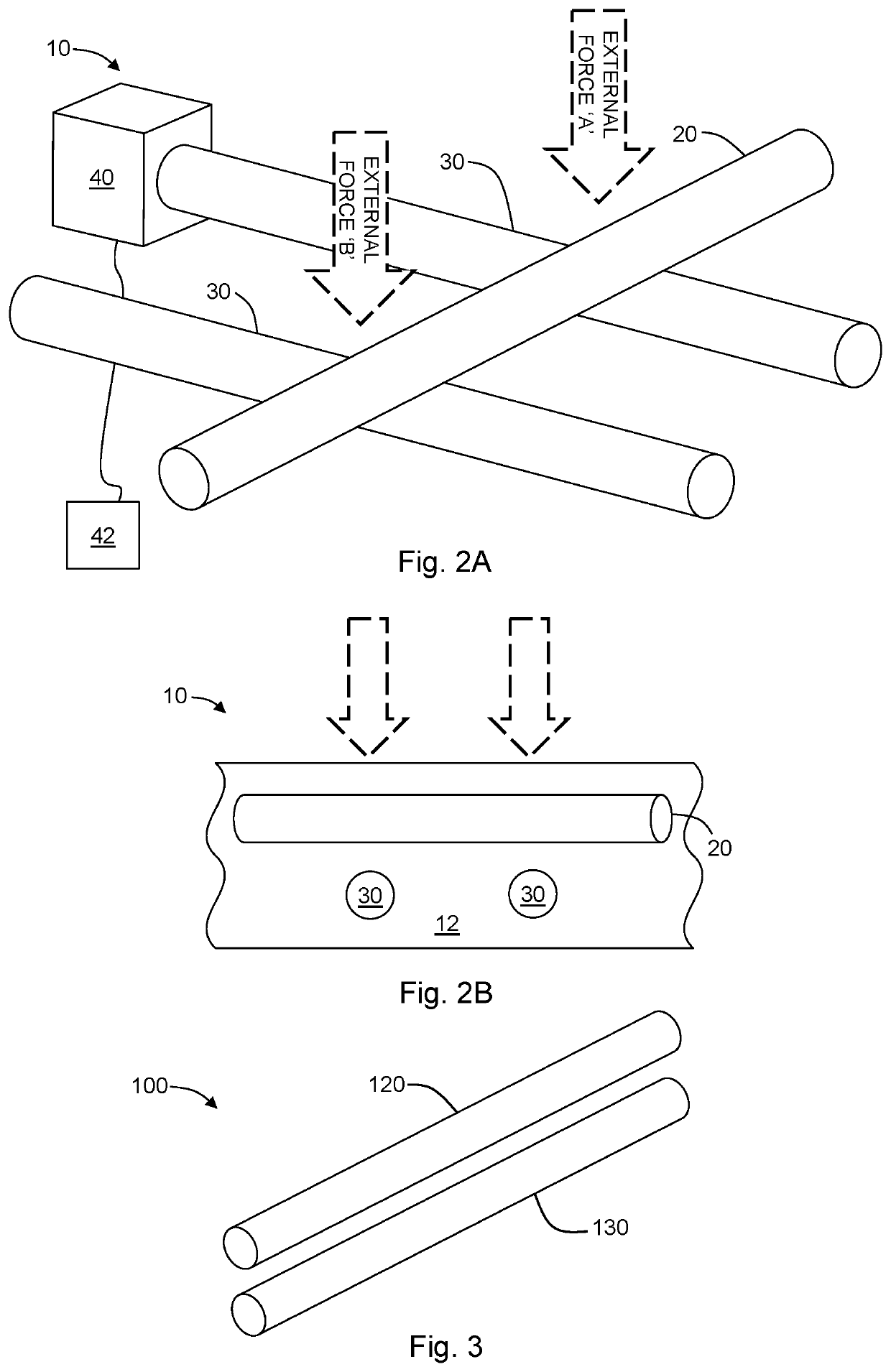Elastomeric lightguide coupling for continuous position localization in 1,2, and 3D
a lightguide and elastomeric technology, applied in the field of force sensors, can solve the problems of premature failure, many soft robots that incorporate internal sensing systems, and difficult to adapt to the 3d shape of soft robot internals, and achieve the effect of accurate signal reading
- Summary
- Abstract
- Description
- Claims
- Application Information
AI Technical Summary
Benefits of technology
Problems solved by technology
Method used
Image
Examples
example 1
comprising a deformable substrate; a first waveguide disposed in the substrate; a second waveguide disposed in the substrate; wherein the first waveguide and the second waveguide are arranged to couple when the substrate is deformed by an external force, thereby permitting electromagnetic radiation to be transmitted between the first waveguide and the second waveguide.
example 2
e of Example 1, wherein the deformable substrate is a polymer lattice.
example 3
e of Example 2, wherein the polymer lattice comprises a plurality of struts each having a strut diameter of 0.75 mm to 1.125 mm.
PUM
| Property | Measurement | Unit |
|---|---|---|
| diameter | aaaaa | aaaaa |
| elastic modulus | aaaaa | aaaaa |
| distance | aaaaa | aaaaa |
Abstract
Description
Claims
Application Information
 Login to View More
Login to View More - R&D
- Intellectual Property
- Life Sciences
- Materials
- Tech Scout
- Unparalleled Data Quality
- Higher Quality Content
- 60% Fewer Hallucinations
Browse by: Latest US Patents, China's latest patents, Technical Efficacy Thesaurus, Application Domain, Technology Topic, Popular Technical Reports.
© 2025 PatSnap. All rights reserved.Legal|Privacy policy|Modern Slavery Act Transparency Statement|Sitemap|About US| Contact US: help@patsnap.com



